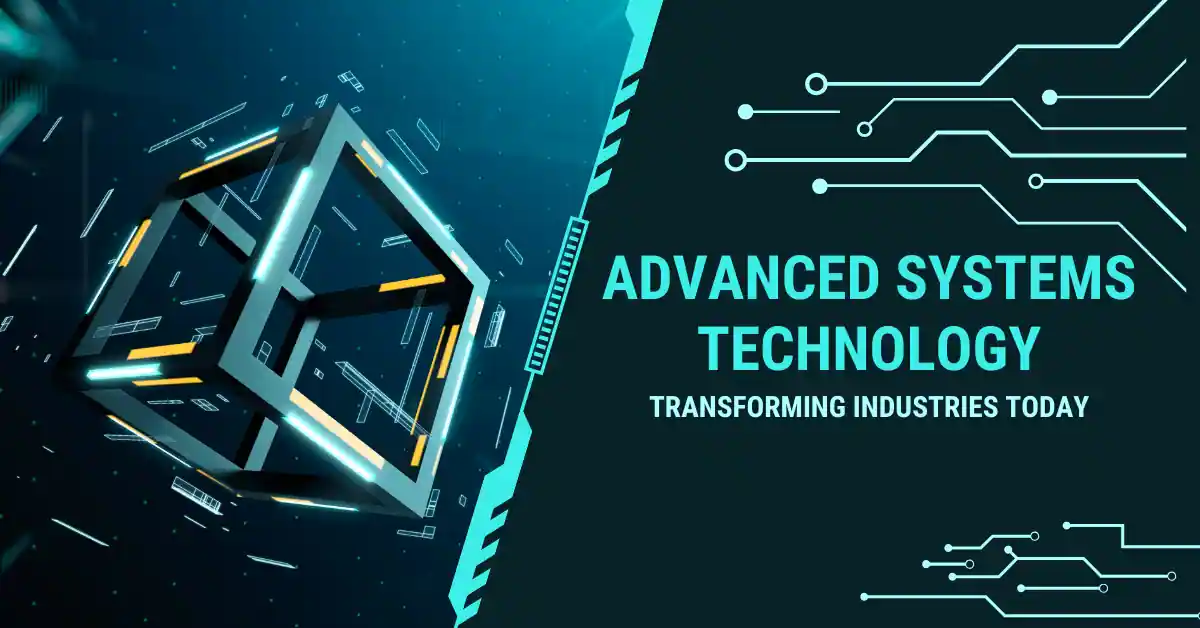In today’s rapidly evolving world, advanced systems technology is transforming how we live and work. From healthcare to finance, its impact is profound, paving the way for more efficient processes and innovative solutions. This article delves into the intricacies of advanced systems technology and what it entails.
Table of Contents
ToggleWhat is Advanced Systems Technology?
Definition and Key Concepts
At its core, It involves the development and implementation of sophisticated systems that can perform complex tasks with minimal human intervention. This includes the use of smart devices, cloud computing, and data analytics to create interconnected ecosystems.
Historical Context
The journey of advanced systems technology began in the mid-20th century with the advent of computers. Over the decades, rapid advancements in electronics, telecommunications, and computing power have paved the way for the systems we see today.
Core Components of Advanced Systems Technology
Hardware Innovations
Hardware innovations play a crucial role in advanced systems technology. Devices are becoming smaller, faster, and more powerful. This includes the development of microprocessors, sensors, and high-capacity storage solutions that support complex operations.
Software Developments
Software advancements are equally significant. Modern software systems are designed to handle vast amounts of data, provide real-time analysis, and automate routine tasks. Machine learning and artificial intelligence have become integral in creating intelligent applications.
Networking and Connectivity
The backbone of advanced systems technology is robust networking capabilities. High-speed internet, cloud services, and the proliferation of wireless communication have enabled seamless connectivity between devices, allowing for greater data exchange and collaboration.
Applications in Various Industries
Healthcare
In healthcare, advanced systems technology has revolutionized patient care through telemedicine, electronic health records, and predictive analytics, leading to improved patient outcomes and streamlined operations.
Manufacturing
The manufacturing sector utilizes advanced systems technology for automation, robotics, and predictive maintenance, enhancing productivity and reducing downtime. Smart factories leverage IoT devices to optimize workflows.
Finance
In finance, systems technology powers trading algorithms, risk assessment tools, and customer relationship management systems, ensuring swift decision-making and enhanced customer service.
Transportation
It enhances transportation through smart logistics, autonomous vehicles, and traffic management systems, resulting in more efficient and safer travel options.
The Role of Artificial Intelligence
Artificial intelligence (AI) is at the heart of advanced systems technology. AI enhances decision-making processes by analyzing large datasets and providing actionable insights. From chatbots in customer service to AI-driven diagnostics in healthcare, the applications are limitless.
Future Trends in Advanced Systems Technology
Automation and Robotics
The future of It lies in further automation and the use of robotics across various sectors. These innovations promise to handle tasks previously deemed too complex for machines, transforming industries and creating new job opportunities.
Internet of Things (IoT)
The Internet of Things (IoT) will continue to expand, connecting everyday devices to the internet. This integration allows for real-time data collection and improved decision-making processes, creating smarter living environments and businesses.
Sustainability Initiatives
As awareness of environmental issues grows, It will play a pivotal role in sustainability initiatives. Technologies that optimize resource use and reduce waste will become increasingly important in the coming years.
Challenges and Considerations
Cybersecurity Risks
Despite its advantages, It comes with challenges, particularly concerning cybersecurity. As systems become more interconnected, they become more vulnerable to cyber-attacks, necessitating robust security measures to protect sensitive data.
Integration Issues
Integrating new technologies into existing systems can be a daunting task. Businesses must navigate compatibility issues and ensure that new solutions align with their strategic goals, which can slow down the adoption process.
Conclusion
In conclusion, It is reshaping our world, driving innovation across various sectors. As we embrace these changes, understanding the implications and challenges will be crucial. The future is bright for advanced systems, and staying informed is essential for success.
FAQs
1. What is advanced systems technology?
It involves the integration of sophisticated hardware and software to enhance efficiency and functionality.
2. How is AI used in it?
AI analyzes data to improve decision-making processes.
3. What industries benefit from it?
Healthcare, manufacturing, finance, and transportation are key sectors.
4. What challenges does it face?
Cybersecurity risks and integration issues are significant challenges.
5. What future trends should we watch for?
Automation, IoT expansion, and sustainability initiatives are on the horizon.





